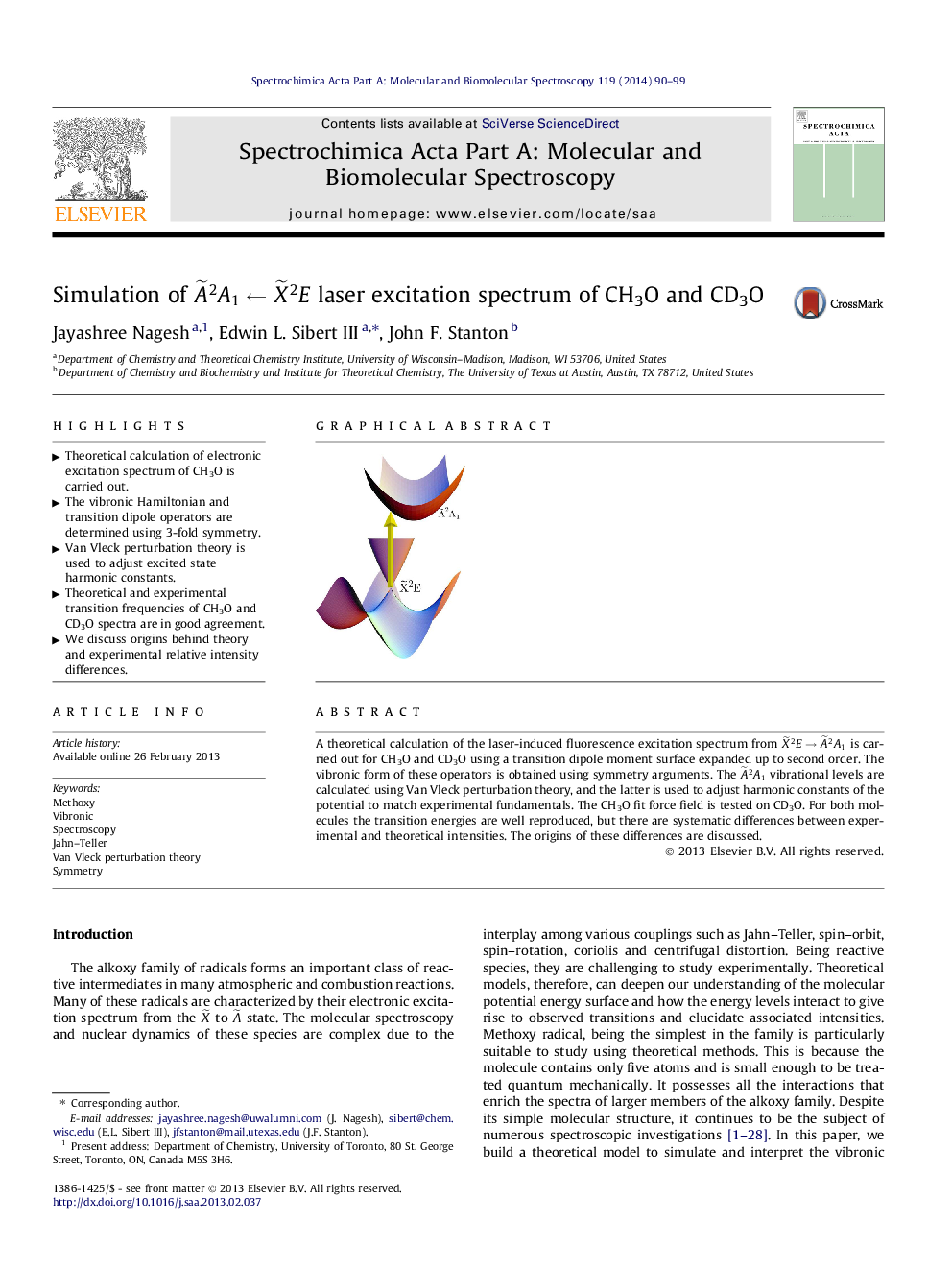| Article ID | Journal | Published Year | Pages | File Type |
|---|---|---|---|---|
| 1233090 | Spectrochimica Acta Part A: Molecular and Biomolecular Spectroscopy | 2014 | 10 Pages |
A theoretical calculation of the laser-induced fluorescence excitation spectrum from X∼2E→A∼2A1 is carried out for CH3O and CD3O using a transition dipole moment surface expanded up to second order. The vibronic form of these operators is obtained using symmetry arguments. The A∼2A1 vibrational levels are calculated using Van Vleck perturbation theory, and the latter is used to adjust harmonic constants of the potential to match experimental fundamentals. The CH3O fit force field is tested on CD3O. For both molecules the transition energies are well reproduced, but there are systematic differences between experimental and theoretical intensities. The origins of these differences are discussed.
Graphical abstractFigure optionsDownload full-size imageDownload as PowerPoint slideHighlight► Theoretical calculation of electronic excitation spectrum of CH3O is carried out. ► The vibronic Hamiltonian and transition dipole operators are determined using 3-fold symmetry. ► Van Vleck perturbation theory is used to adjust excited state harmonic constants. ► Theoretical and experimental transition frequencies of CH3O and CD3O spectra are in good agreement. ► We discuss origins behind theory and experimental relative intensity differences.
